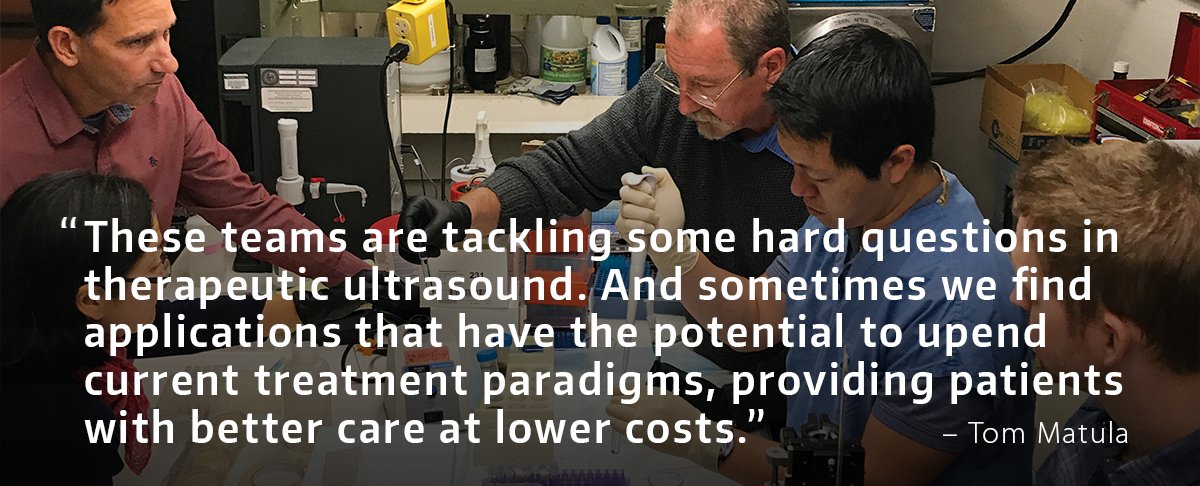
|
|
ultrasonic therapies: fast, painless + effective Patients suffering from two common afflictions — abscesses and hematomas — may someday soon find relief with ultrasound therapies that liquefy targeted tissue inside the body with no damage to the intervening tissue. Treatment of hematomas and abscesses relies on the ability of ultrasound to disintegrate cells by tearing them apart mechanically. When a sequence of millisecond-long focused ultrasound pulses is delivered by the transducer, the profile of the initially harmonic wave steepens, becomes nonlinear, and a high-amplitude shock forms at the acoustic focus. CIMU investigators discovered that these shock fronts create instantaneous heating that, in turn, generates millimeter-sized boiling bubbles at the focal region. Each subsequent acoustic pulse and resulting shock front interacts with the bubbles’ vapor cavity, which generates extreme shear forces that rip apart any cellular material near the focus. innovation imperative: toward clinical therapies CIMU investigators received a U.S. patent last year for the devices and methods used to study hematoma treatments with ultrasound. The technique to emulsify tissue through ultrasonic atomization holds promise for many clinical applications that require tissue ablation. Physician researchers at the UW School of Medicine are collaborating with the CIMU science and engineering team. Besides large hematoma therapy, they are investigating the treatment of pancreatic and kidney cancers. Mechanical ablation of tumors with focused ultrasound replicates the benefits of surgical removal, but without the damage to healthy tissue and associated recovery. |

mechanical tissue ablation with focused ultrasound: methods, mechanisms + instruments 
mechanical tissue ablation with focused ultrasound: clinical applications |
|||
| navigate | |
|
|
|





